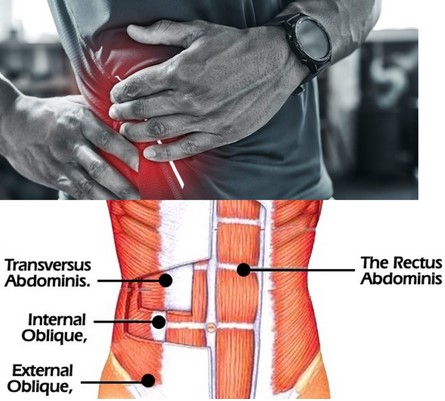
 Oblique strain is a common injury that affects the muscles and tendons of the abdomen and hip. It is caused by overstretching or tearing of the muscles and tendons in the area. Symptoms of oblique strain include pain, tenderness, swelling, and bruising in the affected area. Treatment for oblique strain typically involves rest, ice, compression, and elevation (RICE) as well as rehabilitation exercises to strengthen the muscles and tendons. This article will discuss the causes, symptoms, and rehabilitation strategies for oblique strain.
Oblique strain is a common injury that affects the muscles and tendons of the abdomen and hip. It is caused by overstretching or tearing of the muscles and tendons in the area. Symptoms of oblique strain include pain, tenderness, swelling, and bruising in the affected area. Treatment for oblique strain typically involves rest, ice, compression, and elevation (RICE) as well as rehabilitation exercises to strengthen the muscles and tendons. This article will discuss the causes, symptoms, and rehabilitation strategies for oblique strain.
Understanding Oblique Strain: Causes, Symptoms, and Treatment Options
Oblique strain is a common injury that affects the muscles and tendons of the abdomen and torso. It is caused by overstretching or tearing of the oblique muscles, which are located on the sides of the abdomen. Symptoms of oblique strain include pain, tenderness, and swelling in the affected area. The pain may be sharp or dull and can range from mild to severe.
The most common cause of oblique strain is overuse or repetitive motions. This can include activities such as throwing a ball, lifting weights, or performing abdominal exercises. Other causes of oblique strain include direct trauma to the abdomen, such as a fall or a blow to the area.
Treatment for oblique strain depends on the severity of the injury. Rest is the most important part of treatment, as it allows the muscles and tendons to heal. Ice and compression can also be used to reduce swelling and pain. Non-steroidal anti-inflammatory drugs (NSAIDs) may be prescribed to reduce inflammation and pain. Physical therapy may be recommended to help strengthen the muscles and improve flexibility. Surgery may be necessary in severe cases.
Oblique strain can be prevented by warming up before physical activity and avoiding activities that involve repetitive motions. It is also important to use proper form when performing exercises and to stop if pain or discomfort is felt. Wearing supportive clothing and using proper equipment can also help reduce the risk of oblique strain.
If you experience any of the symptoms of oblique strain, it is important to seek medical attention. Early diagnosis and treatment can help reduce the severity of the injury and prevent further complications.
Rehabilitating an Oblique Strain: Exercises and Strategies for Recovery
An oblique strain is a common injury among athletes, especially those who participate in sports that involve a lot of twisting and turning. Fortunately, with the right exercises and strategies, you can rehabilitate your oblique strain and get back to your sport or activity as soon as possible.
Exercises
The best exercises for rehabilitating an oblique strain are those that focus on strengthening the muscles in the abdominal and oblique regions. Here are some exercises you can do to help strengthen your oblique muscles:
1. Side Plank: Lie on your side with your elbow directly beneath your shoulder and your feet stacked. Lift your hips off the ground and hold for 30 seconds. Repeat on the other side.
2. Medicine Ball Twists: Stand with your feet shoulder-width apart and hold a medicine ball in both hands. Twist your torso to the left and then to the right. Repeat 10 times.
3. Abdominal Crunches: Lie on your back with your knees bent and your feet flat on the floor. Place your hands behind your head and lift your shoulders off the ground. Hold for a few seconds and then lower your shoulders back down. Repeat 10 times.
Strategies
In addition to exercises, there are a few strategies you can use to help rehabilitate your oblique strain.
1. Rest: It’s important to give your body time to heal. Avoid activities that involve twisting and turning until your oblique strain has healed.
2. Ice: Applying ice to the affected area can help reduce inflammation and pain.
3. Stretching: Stretching the muscles in the abdominal and oblique regions can help improve flexibility and reduce the risk of re-injury.
4. Massage: Massage can help reduce tension in the muscles and improve circulation.
Conclusion
Rehabilitating an oblique strain can be a challenging process, but with the right exercises and strategies, you can get back to your sport or activity as soon as possible. Remember to rest, ice, stretch, and massage the affected area to help speed up the healing process.Oblique strain is a common injury that can be caused by a variety of activities, including sports, lifting, and other physical activities. Symptoms of oblique strain include pain, tenderness, and swelling in the affected area. Treatment for oblique strain typically involves rest, ice, compression, and elevation. Rehabilitation strategies may include stretching, strengthening, and proprioceptive exercises. With proper treatment and rehabilitation, oblique strain can be managed and the individual can return to their normal activities.